Prehearsals and Pre-enactments
Test sites, training protocols, and case studies interrogating anticipatory reflexes and interpersonal responses to possible futures.
Excerpts gleaned from The Prehearsal Pocket Guide, Prehearsing the Future, A Futurist's Fieldguide, and Enacting Futures in Postnormal Times.
 Postcards from The Future: Molenbeek by C&H (Heike Langsdorf, Christophe Meierhans, & Christoph Ragg)
Postcards from The Future: Molenbeek by C&H (Heike Langsdorf, Christophe Meierhans, & Christoph Ragg)
Can the present accommodate a rehearsal space for enactments of the possible and futures that may yet come to pass? A space where “what if?” questions manifest in immersive “as if” situations, engaging all our senses? Situations that can animate us in the moment, with the visceral memory of our experience able to reactivate a sense of agency and possibility long after it has passed. To design such situations, we can lean on the arts of improvisation. Simultaneously spontaneous and strategic, improvisation incorporates discussion and representation, wrapping stories in embodied experiences.
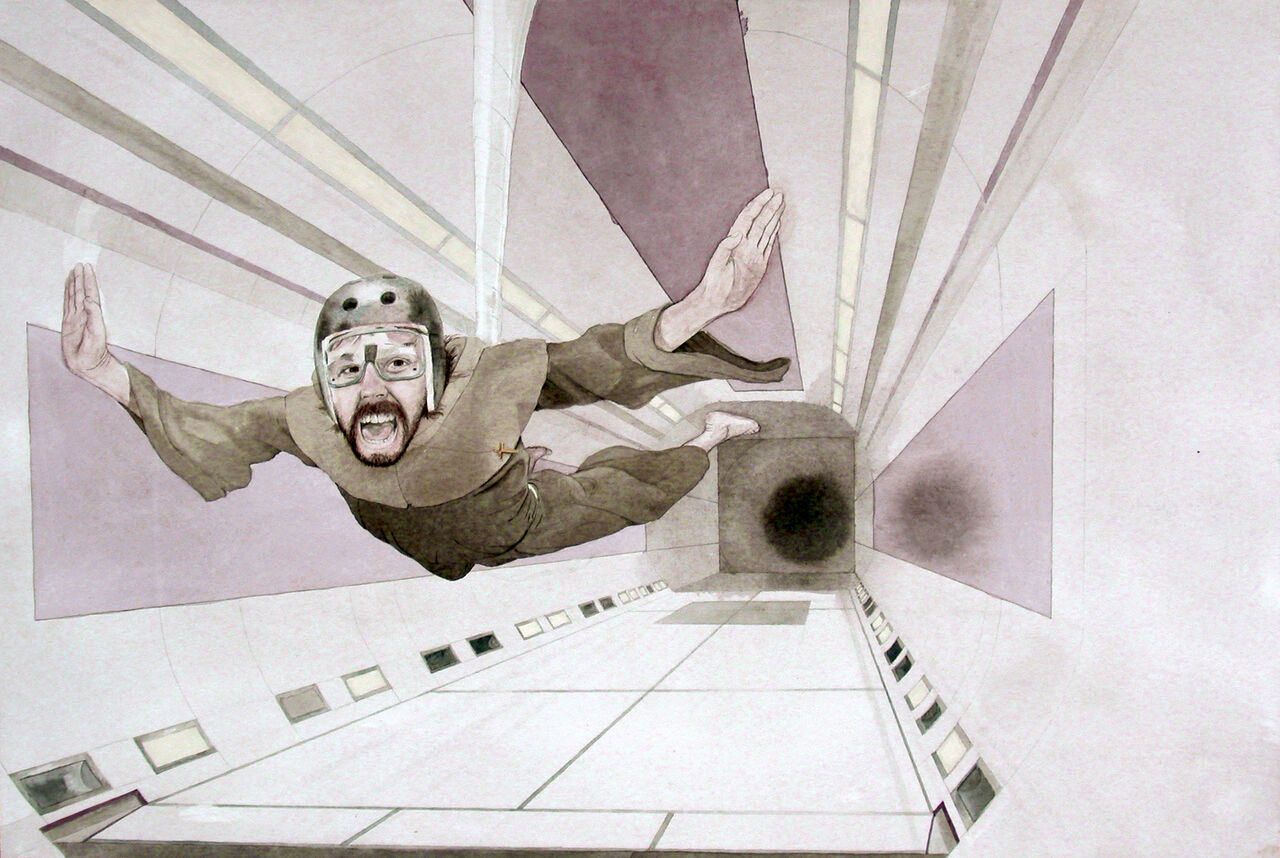
Prehearsals and pre-enactments are improvised experimental situations that allow participants to experience what a given possible future might feel like, at a higher resolution than would be possible with words or images alone. Through these situations, different scenarios can be explored and stress-tested, exposed to the randomness of social improvisation in an immersive setting.
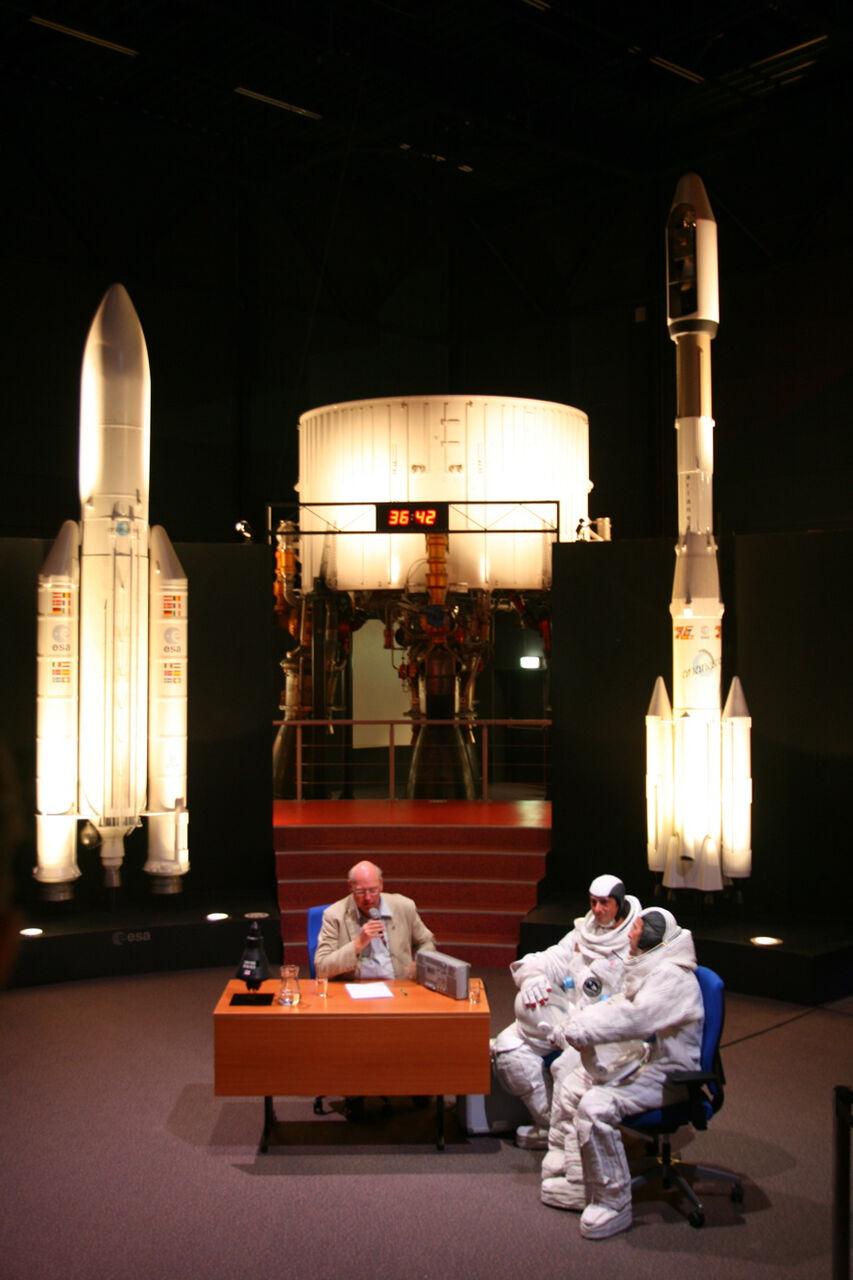 FoAMlab’s Mission to the Moon
FoAMlab’s Mission to the Moon
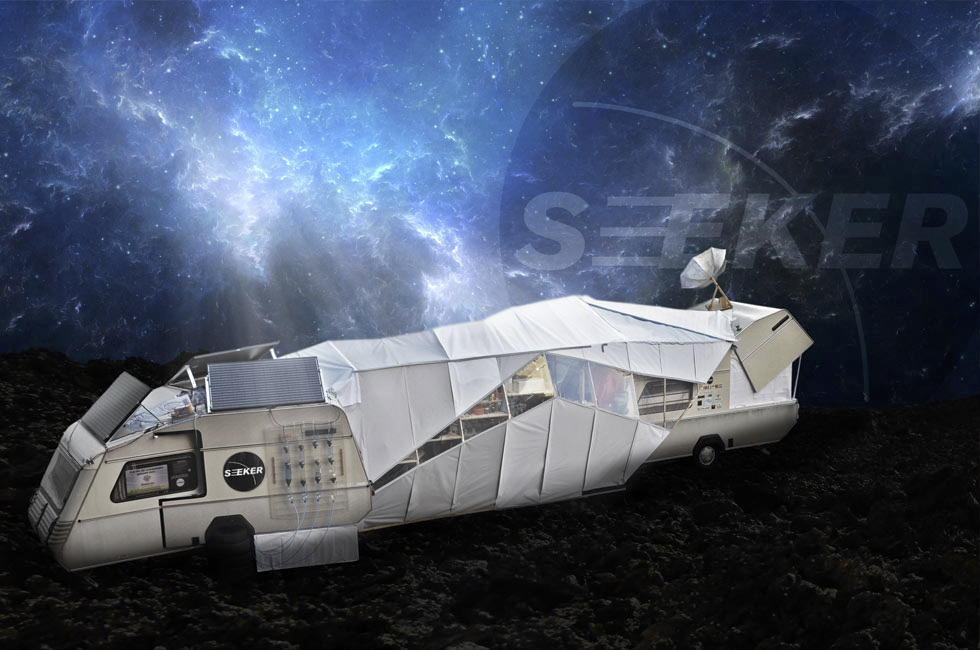 Angelo Vermeulen’s Seeker
Angelo Vermeulen’s Seeker
Prehearsals and pre-enactments have no spectators, only participants. Initial starting conditions usually include a predefined backstory (to establish a context), a set of rules, and a location and time-frame. Characters and events emerge through the interactions of those involved. Participants are invited to imagine who they might become and what their life would be like in the pre-enacted future, and to act accordingly. The embodied experience helps to surface existing strengths and weaknesses (of people and situations), and bring out the most interesting or valuable aspects of a scenario.
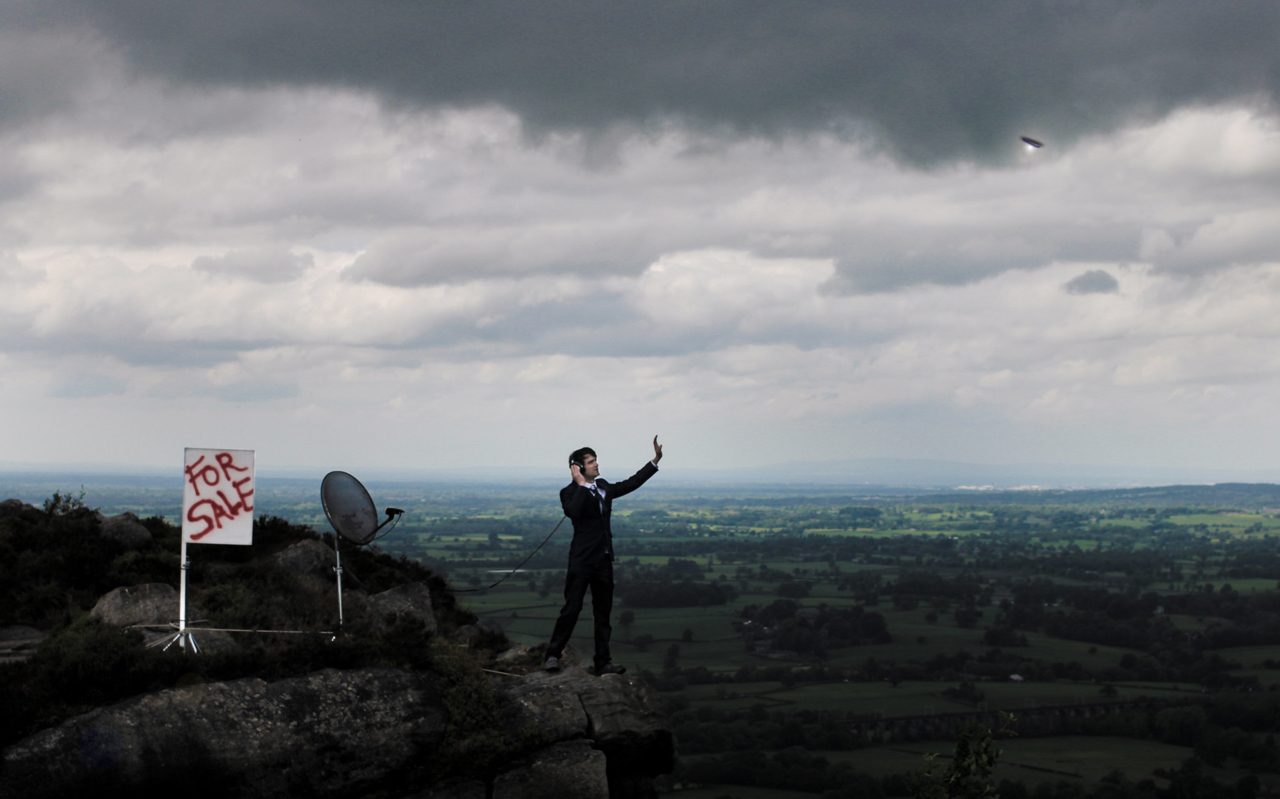 The Intergalactic Estate Agency by Austin Houldsworth, part of the Invisible Worlds Residencies at the Eden Project in Cornwall, 2019.
The Intergalactic Estate Agency by Austin Houldsworth, part of the Invisible Worlds Residencies at the Eden Project in Cornwall, 2019.
Prehearsals differ from pre-enactments in their complexity and duration. Prehearsals are short improvisation exercises that can be self-contained or one part of a larger process or format (for example, workshops, coaching, or therapy sessions). Usually less than an hour long, prehearsals allow a quick-and-dirty test of a particular scenario instance, focusing on players’ behaviours and interactions. The prehearsed situation should be sufficiently familiar that participants are able to focus on the prehearsal’s content, without being distracted by its form. The depicted situation could, for example, be a market, conference, train ride, or coffee break — settings and encounters that provide a context for the central question the group is exploring. The challenge for participants is to place themselves in this familiar situation, while imagining that it is happening in a specific possible future. See, for example: The Futures of Doing Nothing

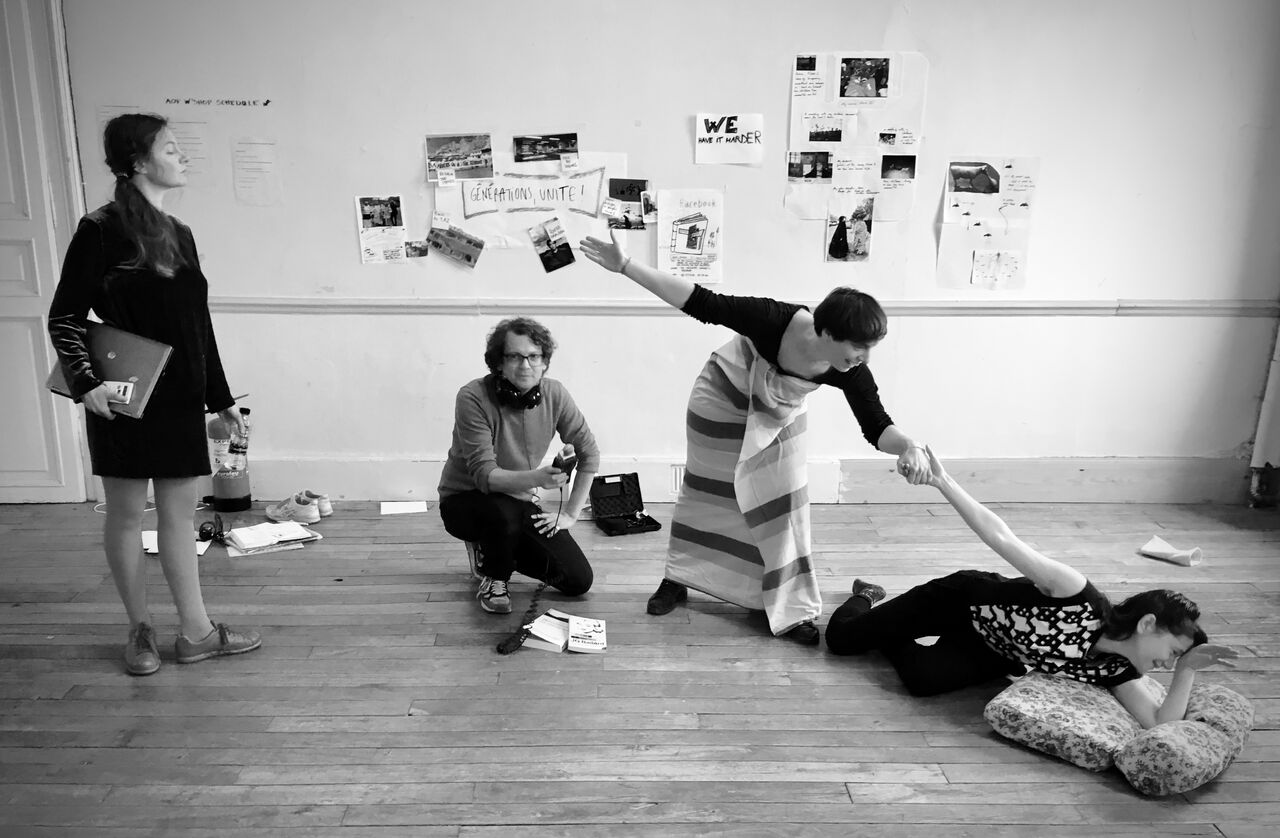
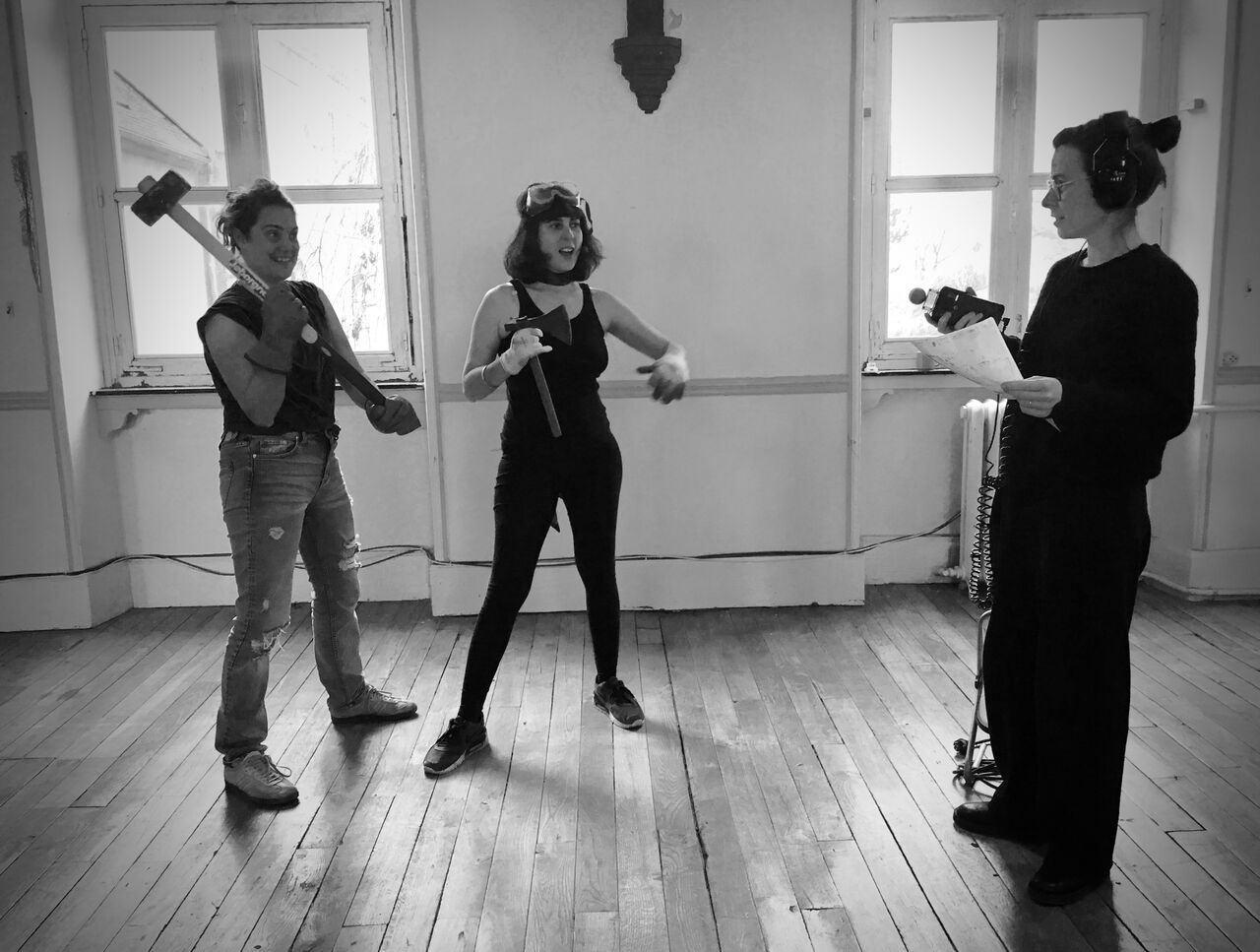 Freeze frames (where the participants create an image using their bodies — without movement) from the prehearsals during The Art of Futuring workshop
Freeze frames (where the participants create an image using their bodies — without movement) from the prehearsals during The Art of Futuring workshop
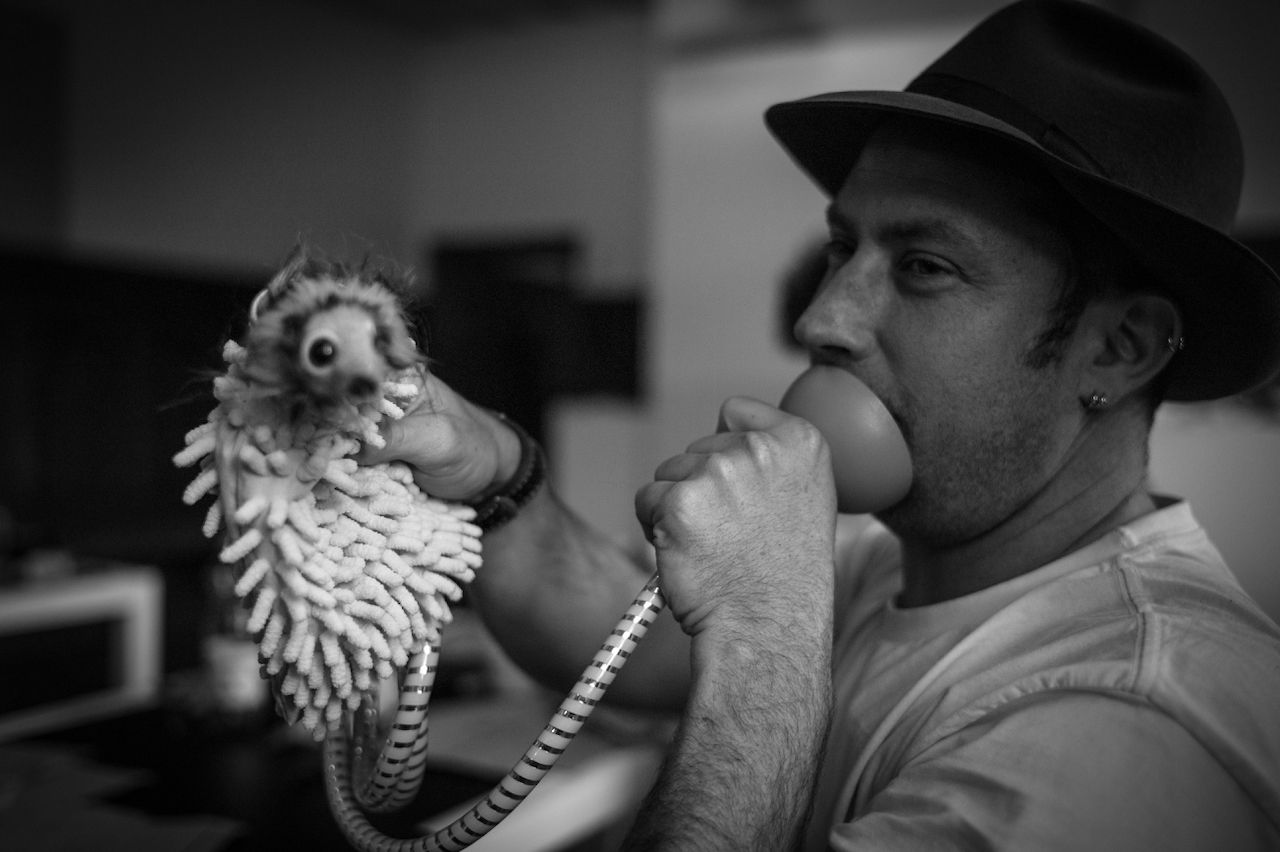 A human-ferret communicator prototyped duringa workshop with Extrapolation Factory in Hasselt, 2014
A human-ferret communicator prototyped duringa workshop with Extrapolation Factory in Hasselt, 2014
Pre-enactments are longer, larger-scale productions, which often include detailed worldbuilding and designed props, costumes, or accessories (for example, prototypes of new media or technologies). Inspired by large-scale live action role-playing games (larps) and re-enactments, these are typically stand-alone exercises, demanding more from participants in terms of time, creativity, and attention. But rather than enacting a fictional or historical situation, participants pre-enact a situation that may exist in their future. Through inhabiting a range of situations, participants can find out how they might react to changing conditions, noticing the thoughts, emotions and behaviours that underlie their habitual reactions. In different scenarios, different aspects of someone’s personality come to the fore; from the vantage point of different futures, they might come to know themselves better. See, for example: Resilients: The Flotilla
In pre-enactments, participants experience living and working as if they had already become their future selves, for at least a day, A day can mean a “working day”, 24 hours, or from waking up to going to sleep. The pre-enactment is most effective when it uses some “natural” transition where people are moving from one mind state to another. often in real-life situations involving unsuspecting bystanders In public space, at work, at home — anywhere the “magic circle” can become porous, forcing participants to improvise scenario elements they hadn’t anticipated, and consider how their speculations would interface with things going on elsewhere.

 New Babylon’s State of the Union 2084 prehearsal at the Hortus Salon, Erasmus House, Brussels, 2012
New Babylon’s State of the Union 2084 prehearsal at the Hortus Salon, Erasmus House, Brussels, 2012
The question of how to step into and out of the “magic circle” of a prehearsal or pre-enactment is a small but important detail. The threshold demarcates an arena set apart from ordinary life in both time and space. Once people cross this threshold, different rules apply, and mundane actions assume a special meaning. Equally, stepping out of the circle requires shedding one’s “prehearsal skin”. Knowing when and how this happens — and having a clearly defined transition back to consensus reality — can prevent confusion and disorientation.
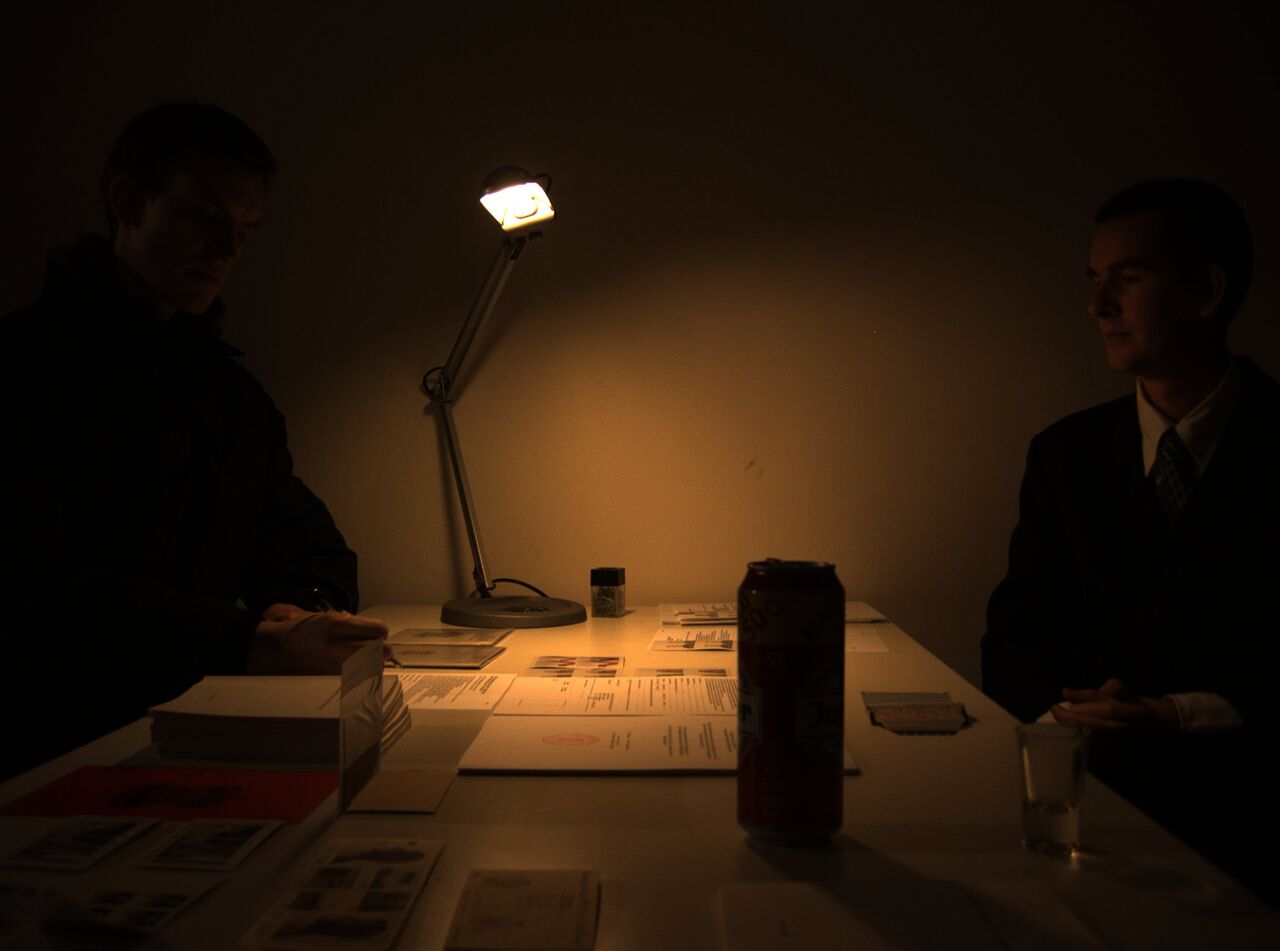 Passport application procedure during the De-auguration of the Temporary Embassy of the Kingdom of Elgaland-Vargaland in Brussels, 2003.
Passport application procedure during the De-auguration of the Temporary Embassy of the Kingdom of Elgaland-Vargaland in Brussels, 2003.
Training anticipatory reflexes
Prehearsals and pre-enactments allow an image of a possible future to be inhabited, explored, and shaped through observation and improvised engagement. This image, or model, is internalised, then translated and challenged through participants’ actions, reactions, and interactions. Knowing the prehearsal is an embodied image, they can use their capacity for anticipation and speculation to stretch what is already present into what might be possible. People’s actions become signals for others to reach toward, as attractors for improvisation. In a prehearsal the participants are simultaneously witnessing, responding to, and creating changes in iterative cycles; continuously “updating the shared models from lessons learned”.
A model is a work object. A model is worked, and it does work. A model is like a miniature cosmos, in which a biologically curious Alice in Wonderland can have tea with the Red Queen and ask how this world works.
Donna Haraway
None of the Above Camp Inventory: Food. Art. Technology. Ecology. Design. Fortune. Plant matter. Paraeconomy. Radical Bureaucratisation. Strange attractors. Tsunami pants. Inflatable patterns. Active materials. Publication as Performance. Hi-tech. Lo-fi. DIY. Unpack as required.

 Dust & Shadow soundwalk. an experience of the desert teeming with life.
Dust & Shadow soundwalk. an experience of the desert teeming with life.
Prehearsals train our anticipatory reflexes. Like meditation or martial arts, practice allows us to become more intimately aware of our responses to changing circumstances. The more varied the futures we prehearse, the more we can learn about how we behave in unpredictable situations. Through practice, we can develop aptitudes that help us coexist and engage with complex problems. We are prepared to “stay with the trouble”, whatever it happens to be.
🝓